Quicklinks
Quicklinks
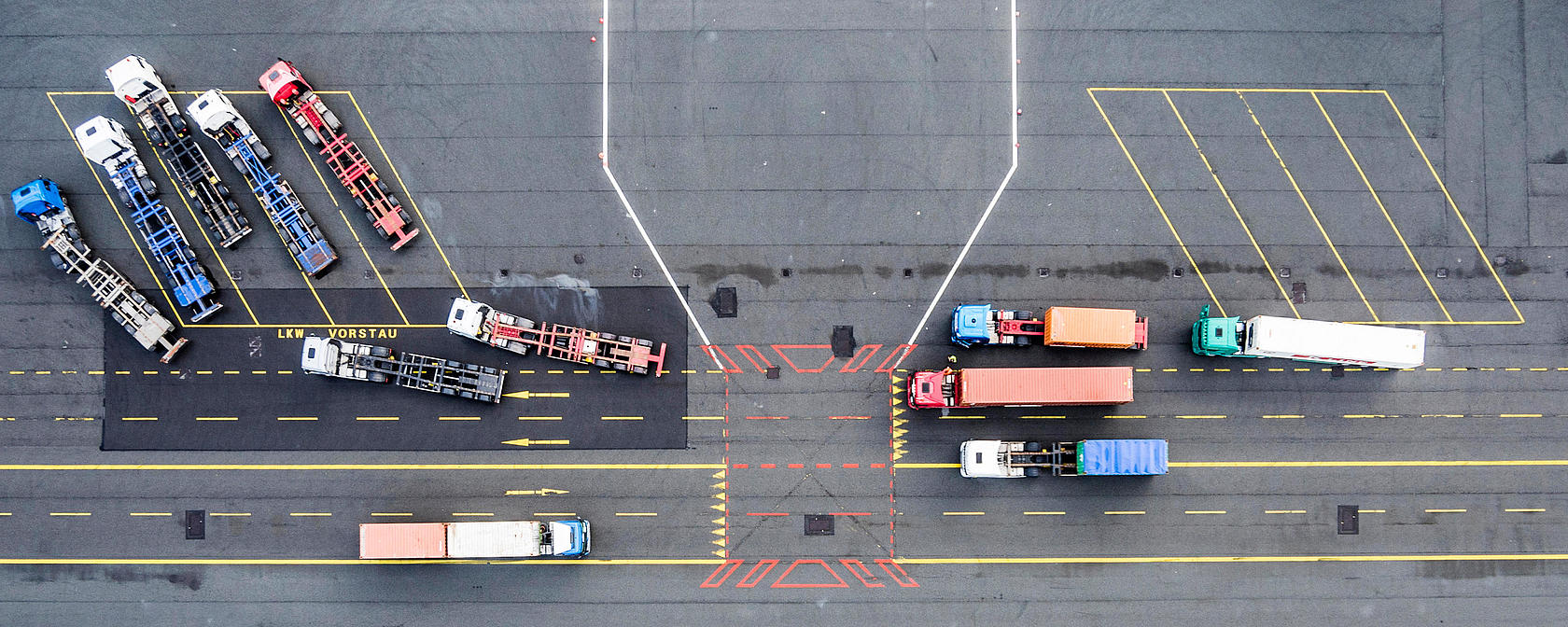
A driver sits in front of a huge screen that is divided into six segments. Before him is a sports steering wheel, aluminium pedals and various controls with colourful buttons. Half a dozen screens provide a panoramic view. At first glance, the cockpit resembles an oversized gaming scenario. But a closer view shows that the images on the screens are not 3D graphics: they are real-life images of the Port of Muuga, near the Estonian capital of Tallinn. The grounds of the terminal are behind the windows; roller blinds have been pulled down as protection against reflections on the monitor. The man at the screen operates the truck that is currently being loaded with a container.
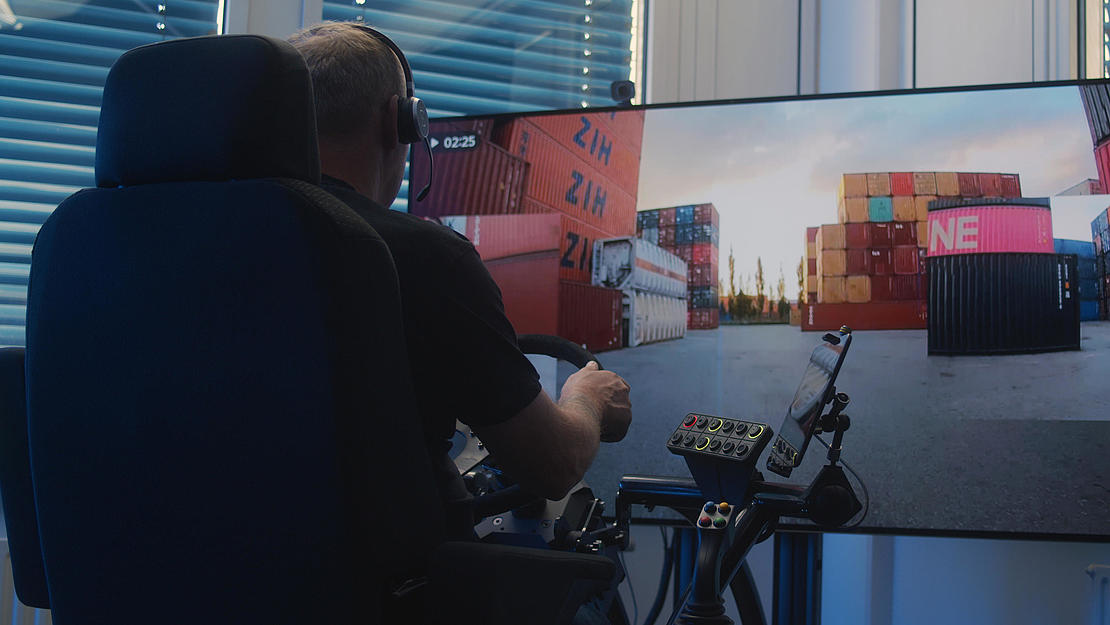
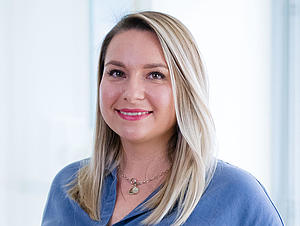
In theory, this would also be possible from a building located 2,000 kilometres away in Munich – where FERNRIDE is developing secure technology for “human-assisted autonomy”. This is a long-term task, explains Maria Tarasova, Head of Marketing and Communications at FERNRIDE: “We need to understand where it will make sense to drive completely autonomously in the future, and where we need human-assisted autonomy.”

After HHLA became aware of the promising company early on, its innovation unit HHLA Next invested in it. Julian Stephan from HHLA Next explains that, as a first step, FERNRIDE provides a solution to the lack of drivers, which has persisted for years. This problem will be addressed using special tractor units, which are remote-controlled and drive semi-autonomously in the port area: “A customer promise already exists since autonomous driving is in the final phase of development.”
Teleoperated driving could therefore be a temporary solution until trucks and tractor units can be fully automated or even move independently and autonomously. But the road to the future is still long, and until then, specialist manufacturer Terberg offers an electric version of the remote-controlled tractor unit. These require only a small turning radius, are carbon-neutral in operation, and emit so little noise and so few harmful substances that they can even drive in enclosed halls.
Because the fully electric vehicles can be completely remote-controlled, they solve a whole set of problems. The first is immediately apparent: “We have a lack of drivers – and their average age is increasing accordingly,” Stephan explains. Industry association Bundesverband Güterkraftverkehr Logistik estimates that between 80,000 and 100,000 drivers are needed in all sectors in Germany; 20,000 retire every year.
Since one driver can steer several vehicles, teleoperated driving can be a game changer. How does it work? The cars drive easy routes on their own. When things get complicated, the “remote driver” takes over. This primarily happens when there are unclear or difficult steering situations such as manoeuvring on ramps. The vehicles are meant to drive the rest (partially) autonomously.
This may result in a new job profile for office drivers.
The second advantage: the teleoperated approach brings a brand-new look to truck driving. The HHLA Next specialist anticipates that “this could lead to a whole new job profile”. In future, professional drivers could be home every evening and would no longer have to spend the night in cramped bunks on rest areas and parking lots. This would provide older drivers with the necessary comfort, give younger ones a better and more modern perspective, and generally make the job more attractive.
“Of course, there will continue to be committed truck drivers who say ‘I love what I do’,” Julian Stephan concedes. “But others prefer an ‘office job’ and want to be home with their families in the evening.” People who don’t share the dream of being asphalt cowboys might be more attracted to cockpits, joysticks and monitors.
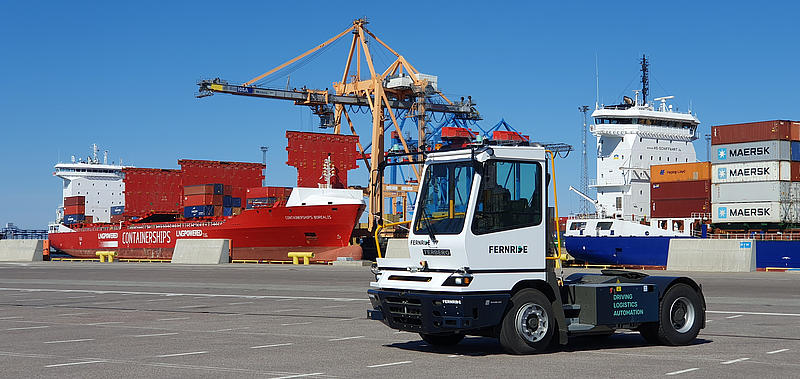
Stephan adds that there are even more advantages: “FERNRIDE drivers have confirmed that they have a better overview than if they were sitting in a truck.” Trips with the FERNRIDE system can reduce accidents. Some of the reasons for this are obvious: aside from the better overview, less fatigue and distraction create a safer environment. Challenges to fully autonomous driving are posed by “edge cases”, where the vehicle is unable to circumvent most obstacles on its own. Other vehicles could be blocking the road; heavy snow or fog could be hindering visibility.
For Maria Tarasova, “human-assisted autonomy” is a solution: “When someone is monitoring the entire process, they can directly solve these edge cases.When one operator monitors several vehicles, we are creating a safe environment for employees and increasing the productivity of operations rather than jeopardising it.”
In the long term, the specialised trucks and their drivers could create desperately needed capacity on the roads. In addition to the FERNRIDE trips on industrial premises, conventional trucks will continue to exist, as will completely autonomous robot trucks in the foreseeable future. This increases the effectiveness of vehicle deployment and makes the entire transport chain more flexible. Depending on the efficiency gained, it could also make the entire process more sustainable. If, for example, several autonomous trucks were organised into a convoy, this could use up to ten percent less operating energy.
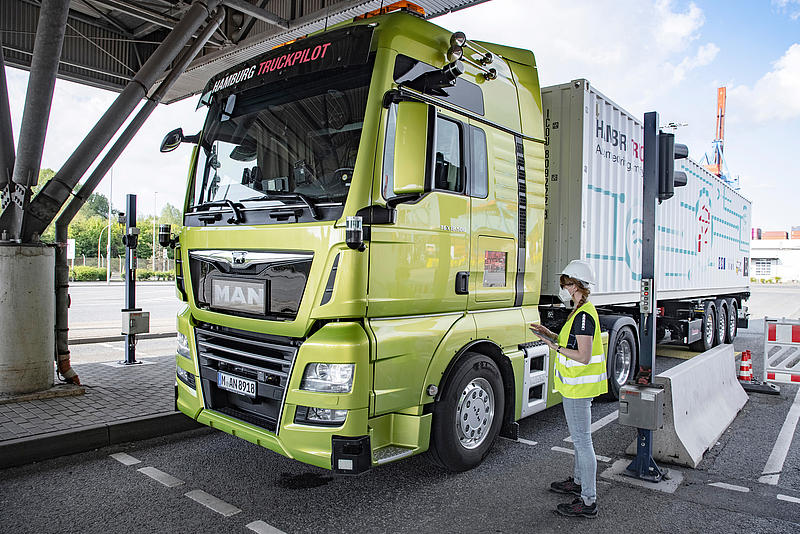
From Julian Stephan’s perspective, all roads lead in only one direction. “In the long term, we are heading towards autonomous driving.” Maria Tarasova from FERNRIDE is also convinced that autonomous driving is the answer to many of the challenges facing the industry in the future. Yet she adds: “In order to ensure the necessary reliability today, FERNRIDE is taking the 'human-assisted autonomy’ approach and thus making its advantages and reliable operations possible from the first day of integration. At the same time, we are developing the technology further in order to make reliable, safe and fully autonomous driving a reality in the future.”
Together with MAN, HHLA has already created the conditions for this future. In a concrete test at HHLA Container Terminal Altenwerder, the Truckpilot project demonstrated that autonomous container transport is safe and efficient, and that it results in fewer emissions. Yet it is only expected to be launched on the market in the years ahead. Teleoperated driving is intended to fill this gap.
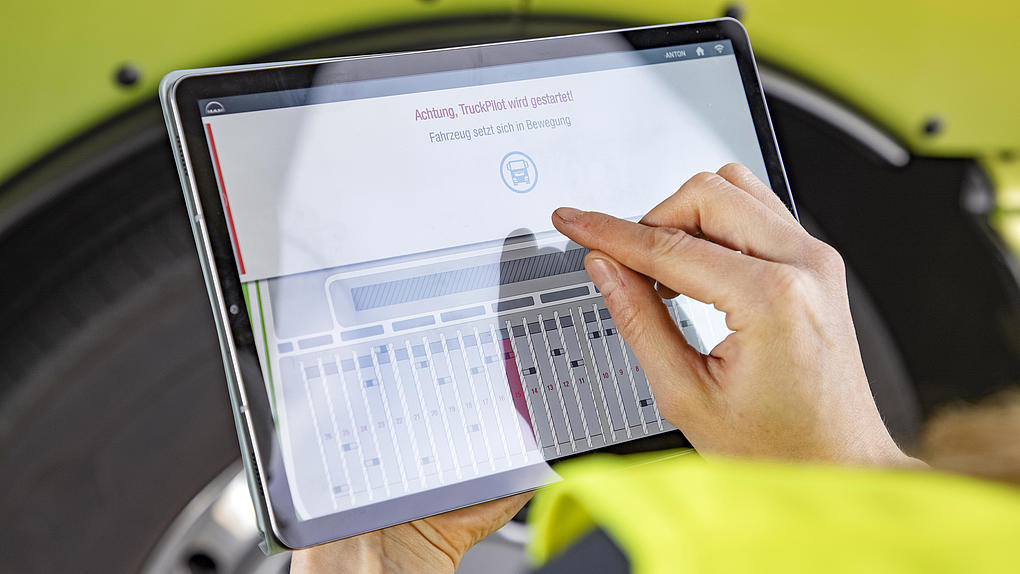
Interview with Till Schlumberger and Sebastian Völl, the project leaders of Hamburg TruckPilot at the Hamburger Hafen und Logistik AG (HHLA) and MAN Truck & Bus.
There is one more technical factor that connects teleoperated with autonomous driving: data. Certain trucks already have all sensors necessary to document all driving manoeuvres and situations. This information is used to train a machine learning system that ultimately enables autonomous driving.
Many gigabytes of data are needed for the system to learn highly complex traffic situations with free road users. This data can be fed into artificial intelligence so it learns situational responses. Thus the FERNRIDE project in Estonia is also providing the necessary foundations for autonomous driving – not only in terms of organisation and personnel, but also in terms of technology, data basis and coordination.